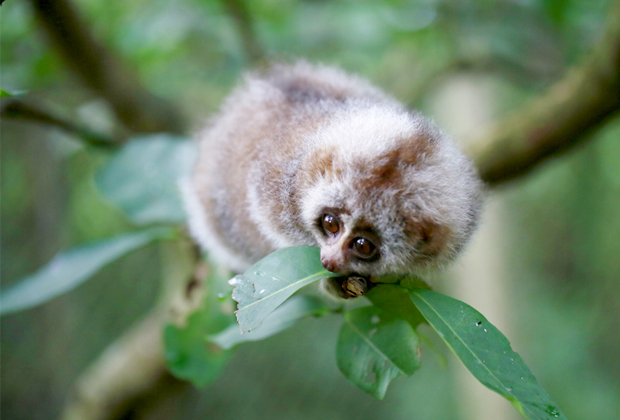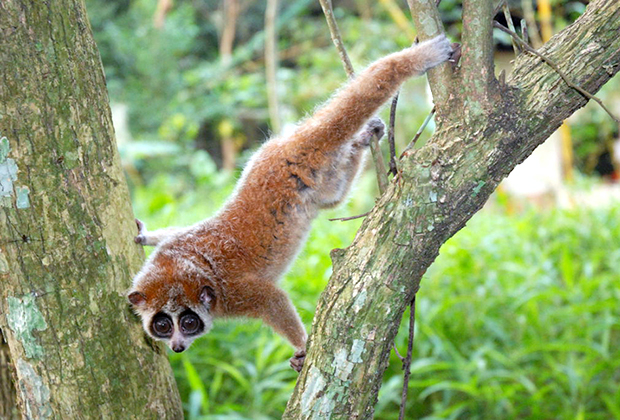(Visited 11,275 times, 4 visits today)
There are 9 genera and over 25 species. The family includes the lorises of Asia and the galagos and pottos of Africa.


You may first know about Loris as a cute, furry and tiny animal whose giant, glistening eyes assure you of their calmness and hospitality. Maybe you have also seen people keeping Loris as a pet. But be aware that not only is this illegal, it is also cruelty to these sensitive animals.
Lorises belong to a family of primates known as Lorisidae, in which there are 9 genera and over 25 species. The family includes the Loris of Asia and the galagos and pottos of Africa. The 8 species of Loris currently recognized range across India, Sri Lanka, and the Southeast Asian mainland up to southern China, Indonesia, and the Philippines.
Like every other primate, a Loris’ fingers and toes have nails although their second toe has a claw. This characteristic allows the Loris to climb trees quite skillfully despite their slow movement. However, they don’t prefer to travel on the ground and they need a closed tree canopy for an easy walk. Lorises love to eat insects at EPRC our keepers frequently catch stick insects or grasshoppers and feed them to our lories as additional nutrients to fruits. Lorises also love to eat tree sap for which they can forage themselves by drilling holes into tree bark and extract the tree sap with their relatively sharp teeth. However, our keepers always prepare in advance drilled tree branches and place them inside the cage for our lorises.
The illegal pet trade is one of the leading reasons for the ongoing decline in loris populations.
In the wild, the Loris is known as a great example of camouflage before their color-blind carnivorous predators. Indeed, red and green color is indistinguishable to the carnivores, which means the orange fur color of the Loris appears the same as tree leaves to them. Their eyes are big which reflect eye shine and give them good vision at night.
Lorises communicate with hormones and high-pitched sounds that humans cannot hear. In EPRC, we tend to put lories into separate cages because they prefer to live solitary.
It is a local belief here in Cuc Phuong, Ninh Binh where EPRC is located, that bringing a Loris home will curse the family with bad luck. It is indeed bad luck for anyone who dares to underestimate a Loris and tickle or threaten them. But there are still people who don’t believe in that. Before lories are sold as a pet, traders can have their teeth removed by clippers to avoid being bitten by them.
Lorises freeze when there is a threat. That makes it easy for hunters and poachers to catch them. Their only real defense is a gland inside their upper arm that produces poison when needed. Lorises lick the gland mixing the poison with saliva that will cause a painful bite, even death, to its victim. The Loris is one of only a few mammals, and the only primate in the world, that is poisonous.
Lorises are protected across their range and subject to international trade restrictions; however, the illegal trade in Loris for medicine and pets continues to put massive pressure on wild populations.

Established in 1993, EPRC is a not for profit project dedicated to the rescue, rehabilitation, breeding, research and conservation of Vietnam’s endangered and critically endangered primate species.
© Endangered Primate Rescue Center 2020
Website by MINIMUMMEANS